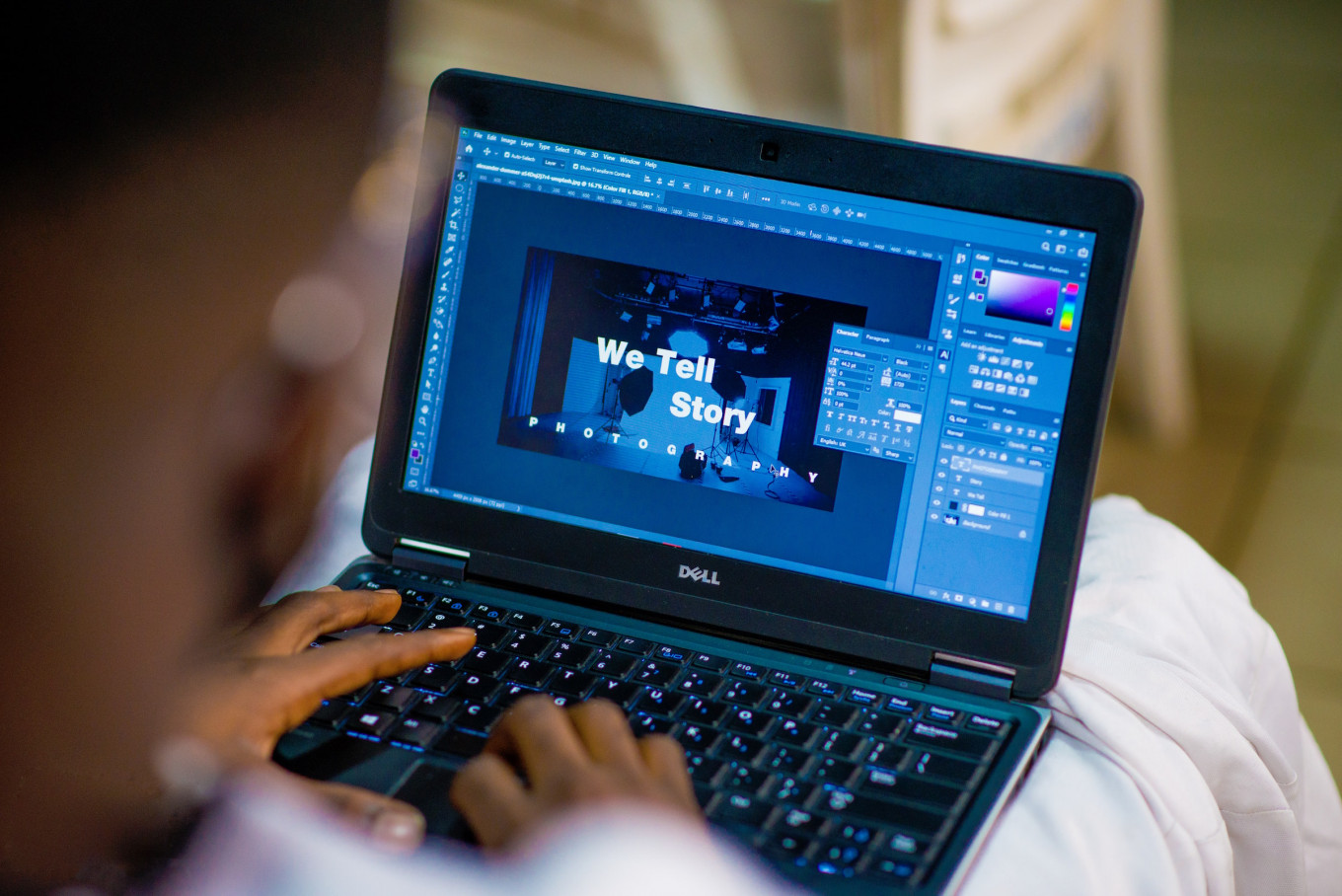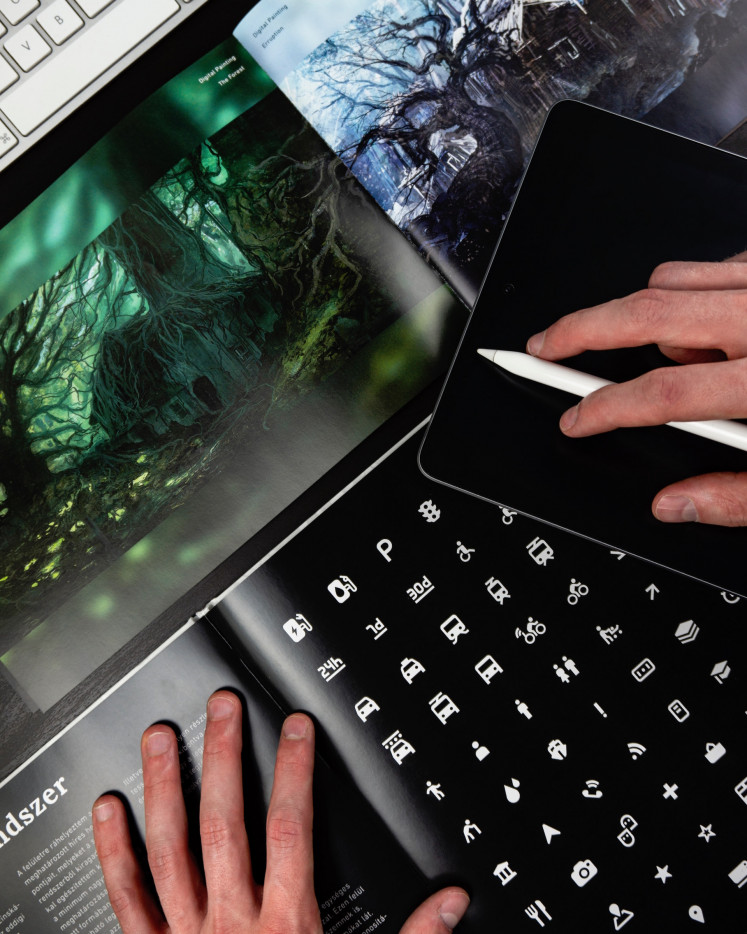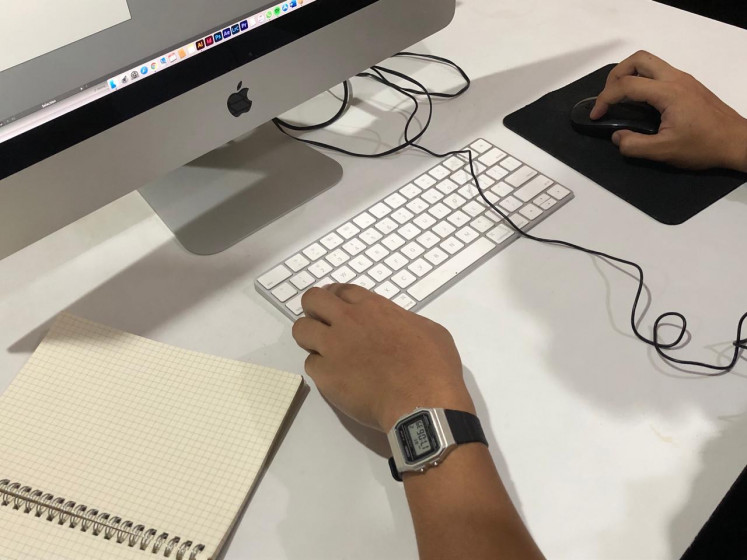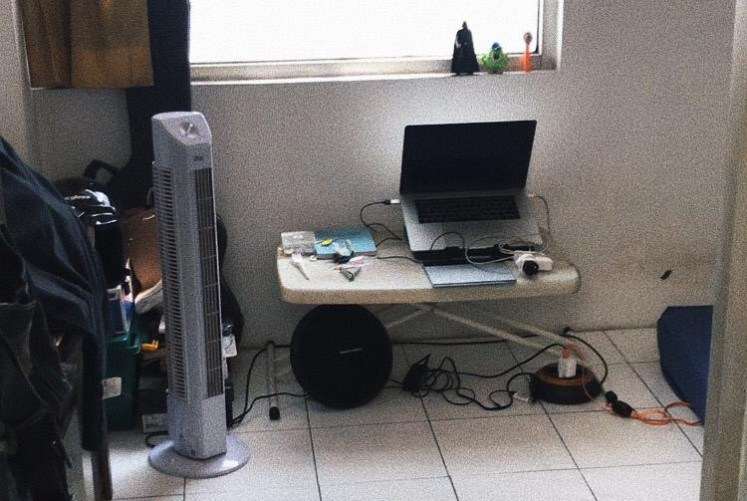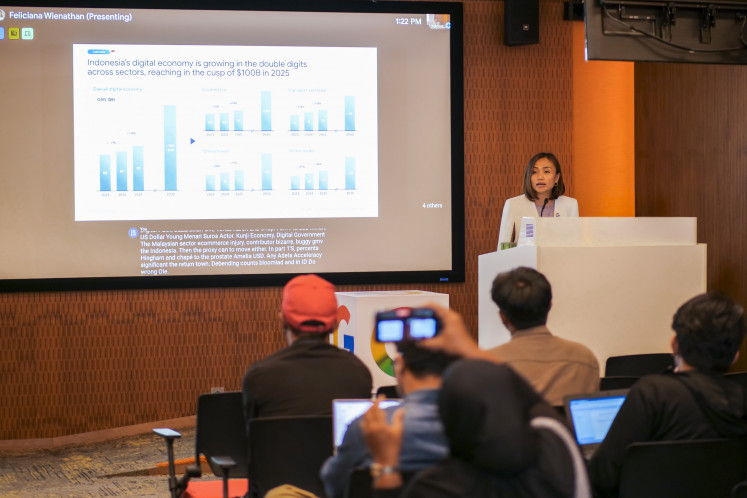Popular Reads
Top Results
Can't find what you're looking for?
View all search resultsPopular Reads
Top Results
Can't find what you're looking for?
View all search resultsHow we can do better: Inside Indonesia's graphic design industry
How We Can Do Better is a new regular column that delves into various industries through the perspectives of its practitioners, and in what ways the industry could improve. In this first installment, we delve into Indonesia’s graphic design industry.
Change text size
Gift Premium Articles
to Anyone
“I don’t feel like I’m suited to work in a strict office setting. With graphic design, I can still pursue what I’m interested in,” said Dito, a 25-year-old graphic designer who recently quit his job. For many creatively inclined individuals, graphic design is often seen as a career where one doesn’t have to sacrifice their creative aspirations. After being in the industry, some of his preconceptions about the discipline were challenged. “Of course, I also bought into the lifestyle—the well-designed clothes, the sleek gadgets, working in coffee shops. The field seems cool and lucrative, for what seems like a more casual type of work,” he continued.
What drew Dito to the discipline at first, was its ability to communicate a message or a concept through a seemingly simple manner. “With drawings or illustrations, you could address or communicate things more directly. The thought process and elements utilized in design are very smart aspects of it,” said Dito. He was disappointed to find out that the level of critical thinking in conceiving a design as he learned in university was rare to find in the industry. The pace of the industry demands a quick turnaround of designs, without much room to exercise critical assessment.
While being its initial appeal, the intermingling of personal expression and the professional in practice poses another challenge in designing. “Since the industry’s practice is somewhat immaterial, the work is highly related to our self-esteem—because what we push is inspired from internally,” said Cadrilla Bareno, a Jakarta-based 24-year-old brand designer. As it turns out, the industry is not as healthy as she thought it was. She found that in practice, design’s human-centered ideas are oftentimes not applied well. “The workplaces’ climates tend to be demoralizing, for example overworking as a form of loyalty and passion toward one’s workplace. This often leads to questioning your own capacity and burnouts,” Cadrilla explained. A similar sentiment was expressed by Dito, who said, “Across the industry, overwork is accepted as normal—even glorified. Of course, working overtime is inevitable sometimes, but why is it so normalized?”
Self-esteem: For many in the graphic design field, their work is highly related to their self-esteem, since they draw heavily from moments of inspiration. (Unsplash/Balazs Ketyi)
Further, Cadrilla continued that from what she sees, a lot of designers who went through burnouts feel that they couldn’t design anymore, something that she feels could be avoided through open conversations. “If a construction worker had a work-related incident, the company will provide compensation. Burnouts, for those whose work is immaterial, are instead seen as a disgrace—partly due to the myth that as creative work is fueled by passion, we just have to keep on pushing,” said Cadrilla. The recently resigned Dito also expressed that he’s reluctant to work at a design office again.
Disorganized hierarchy
In a lot of offices, Cadrilla said the hierarchy within the team was often disorganized, making the workflow unmethodical. When he first worked in his previous office, 26-year-old illustrator Kristian also went through a similar thing. For Kristian, practicing design often only means satisfying his clients and boss as opposed to creating well thought-out solutions to particular needs. Often, designers are in the dark of the process and workflow from clients to their studios, despite this being a valuable insight that they might need in their future.
Other aspects that left many disillusioned are recognition and compensation. While there may be no shortage to high-profile projects, designers that work on them often went unrecognized. “At the very least, I feel that the clients should know about who designed their projects. Most of the time, all the credits go to the principal designers alone,” said Dito. Graphic designers may work on prestigious projects like building brands, governmental projects, or international exhibitions, but many feel the salary they receive is disproportionate to the work they do.
Work desk: Apple's sleekly designed products are the weapon of choice for most designers. (JP/Courtesy of source)Gender bias is also still present in the industry. While Cadrilla said she’s fortunate enough to not experience it herself, she witnessed that often, design offices tend to look for male candidates for positions such as art director. “I feel that competitions or design events that are specifically focused on women are important in putting more spotlight and giving platforms to female designers,” she said.
Behind the studio
When he came across Stefan Sagmeister’s poster for AIGA during high school, Januar Rianto was intrigued. His curiosity led him to study graphic design in Kuala Lumpur and London, before furthering his study as a resident designer/design researcher in Treviso and Tokyo. Today, the 31-year-old runs a design studio with a publishing and production/distribution units.
He admitted that when he first started, he was not expecting a lot from the industry. “I was simply eager to learn and naive enough to understand all the dynamics and politics of the industry,” Januar said. What he was disappointed with was how overly simplified design is perceived in Indonesia, where it is largely only seen as a mere end product—as opposed to a tool, method, or framework.
Other grievances he has is the lack of genuine intention, conversation, integrity and work ethics within the industry. “Seems like people are always in a ‘rush’, which led to [a lot of] not thoroughly thought-out designs,” he remarked. Having experienced the graphic design industry in Indonesia and other countries, he feels that Indonesian designers’ tendency to reference what other designers are doing elsewhere without regard if it is relevant for the work they are doing here is something that can be improved upon. In general, he also expressed that graphic designers are too self-referential, whereas in practice they should be aware of other disciplines and knowledge that influenced design and vice versa.
Simple setup: Unlike the typical image of the graphic design lifestyle, Kristian's workspace in his apartment looks much like regular home work areas. (JP/Courtesy of Kristian)Moving forward
In addressing the issue of disproportionate salary, Dito said that he thinks there should be a union or governing body for graphic designers, who set the standards of how much they should be paid and issues relating to it. The management should also be more open in discussing financial matters with the employees according to Dito. On the subject of credits, Kristian said that he hopes design offices should be more transparent in crediting the team members behind their works. “My previous office was adamant in building itself as a brand, but there’s no reason that [the designers] don’t receive proper credits,” he said. Transparency—both inwards and outwards—is seen as crucial in improving the climate of the industry.
For Januar, the way to move forward is to improve communication, relationship and comprehension, both among creatives and with clients. For its practitioners, he believes in being more intentional with what they are doing. “I think when things are done consciously and deliberately on purpose, it will eventually contribute at least a tiny amount for the community around us, or the ecosystem if you will.”
On the mental aspects of the job, Cadrilla stated that offices should build psychological safety for their workers. This can be done by normalizing a monthly one-on-one meeting to discuss the issues that the workers may be having. While it’s still uncommon, doing so might help an office to address what steps they could take to progress itself as a whole. “Something as simple as giving feedback without attacking could really contribute towards [making a better work environment],” said Cadrilla.
Ultimately, despite the grievances and imperfections, the designers we talked with still believe in design. Cadrilla stated that regardless of the industry, she’s still enthusiastic about the practice. “You should be able to think further and more critically in your work. You should be able to give a more final answer in designing,” remarked Dito fervently.

